 October 26, 2017 John E. Ross, KD8IDJ, Editor
| ||||||
Aiming for a "Clean Sweep" is Big Part of ARRL November Sweepstakes' Appeal For many, ARRL November Sweepstakes (SS) is the premier ARRL fall operating event, with the lure of a "Clean Sweep" being the ultimate goal. The challenge of SS -- or "Sweeps" -- is to work as many stations in as many of the 83 ARRL and Radio Amateurs of Canada (RAC) sections as possible within the 24 available hours. The number of sections worked is a score multiplier. Be the first in your neighborhood to work all 83 and qualify for a "Clean Sweep" mug!
Given its origins in the traffic-handling realm, ARRL November Sweepstakes has a lengthy exchange that replicates a radiogram preamble. In SS, stations exchange:
The SS Operating Guide package, available for download, explains how to participate in Sweepstakes, including all rules and examples of log formatting. Clubs or public service teams thinking about giving Sweepstakes a try this year will find the guide a useful source for information. Records For those hoping to break one of the current scoring records, there's a high bar. For example, in SS CW, N2IC in New Mexico holds the Single-Operator, High Power record with 255,520 points, set in 2009. The Single-Operator, Low Power record of 213,144 points was set in 2015 by W2GD operating KP2M in the US Virgin Islands. The Single-Operator, QRP record of 173,168 was set in 2002 by N6TR operating W5WMU in Louisiana. Some record holders in the phone (SSB) event include, for example, KE3Q in the top spot, who operated WP3R in Puerto Rico to earn identical 425,280-point scores in 2000 and 2002 in the Single-Operator, High Power category. VE4GV has the Single-Operator Low, Power crown with 308,160 points in 2000 from Manitoba. WA2GO holds the Single-Operator, QRP SSB phone record with 189,920 points from KL7Y in Alaska in 2001. SS CW and Phone records are also listed for unlimited, multi-single, and school categories. Rare Ones Some ARRL/RAC sections are considered tough ones to work for a "Clean Sweep." The often-elusive Northern Territories (NT) multiplier will be on the air this year, however, as Gerry Hull, W1VE/VE1RM, takes the helm of VY1AAA, remotely operating the station of J. Allen, VY1JA, in Yukon Territory. Hull and Allen have done a lot of work on the system on their respective ends of things.
"J has done a lot of work on the station, moving it to an outer building, so it does not bother him when we operate," Hull told ARRL. "The quad has been strengthened. A 160-meter double-L with a 70-foot vertical section has been installed." He said the Alpha linear has been repaired, there is remote antenna switching and azimuth control, plus "small changes in the station to improve reliability." Allen has been working on station wiring, too, he said. Hull shipped Allen a 500-foot roll of coaxial cable over the summer along with "many coax connectors" and other odds and ends. "A Sweep may be hard, given the conditions in the US Virgin Islands and Puerto Rico," Hull allowed. According to FEMA, power has been restored to less than one-third of customers in either location. He said the VY1 station also will be active in the ARRL 160-Meter Contest, December 2-3. Hull pointed out that all VY1AAA remote operators must hold Canadian Advanced amateur licenses. Club Eligibility Lists A new system is in place to submit club eligibility lists, either by uploading a file of eligible members or by copying and pasting from a list, right up until the time of the contest -- November 4 at 2100 UTC in the case of SS CW, and November 18 at 2100 UTC in the case of SS phone. Direct questions to ARRL Contest Branch Manager Bart Jahnke, W9JJ. -- Thanks to Gerry Hull, W1VE; Bart Jahnke, W9JJ Communications Interoperability Training with Amateur Radio Community Set Elements of the US Department of Defense will conduct a "communications interoperability" training exercise November 4-6, once again simulating a "very bad day" scenario. Amateur Radio and MARS organizations will take part. "This exercise will begin with a notional massive coronal mass ejection event which will impact the national power grid as well as all forms of traditional communication, including landline telephone, cellphone, satellite, and internet connectivity," Army MARS Program Manager Paul English, WD8DBY, explained in an announcement.
Again this year, a military station on the east coast and the Fort Huachuca, Arizona, HF station will conduct a high-power broadcast on 60-meter channel 1 (5,330.5 kHz) on Saturday from 0300 to 0315 UTC. New this year will be an informational broadcast on Sunday, on 13,483.5 kHz USB from 1600 to 1615 UTC. Amateur Radio operators should monitor these broadcasts for more information about the exercise and how they can participate in this communications exercise, English said. "We want to continue building on the outstanding cooperative working relationship with ARRL and the Amateur Radio community," English said. "We want to expand the use of the 60-meter interop channels between the military and amateur community for emergency communications, and we hope the Amateur Radio community will give us some good feedback on the use of both the 5-MHz interop and the new 13-MHz broadcast channels as a means of information dissemination during a "very bad day" scenario. Contact English for more information or questions about this exercise. The Doctor Will See You Now! "QRP" is the topic of the new (October 26) episode of the "ARRL The Doctor is In" podcast. Listen...and learn! Sponsored by DX Engineering, "ARRL The Doctor is In" is an informative discussion of all things technical. Listen on your computer, tablet, or smartphone -- whenever and wherever you like!
Enjoy "ARRL The Doctor is In" on Apple iTunes, or by using your iPhone or iPad podcast app (just search for "ARRL The Doctor is In"). You can also listen online at Blubrry, or at Stitcher (free registration required, or browse the site as a guest) and through the free Stitcher app for iOS, Kindle, or Android devices. If you've never listened to a podcast before, download our beginner's guide. ARRL Foundation Announces the NEAR-Fest Memorial Scholarship A new scholarship is available to radio amateurs. The New England Amateur Radio Festival (NEAR-Fest) Memorial Scholarship, administered by the ARRL Foundation, commemorates NEAR-Fest team members who have become Silent Keys, and is intended to provide funding toward the educational expenses of a currently licensed Amateur Radio operator who is pursuing a post-secondary education.
The initial scholarship will be awarded for the 2018-2019 academic year. Scholarships are for the exclusive use of the winner to be applied to tuition, books, mandatory fees, on-campus housing, and other bona fide educational expenses.
CW Gets the Message Through in Wake of Hurricane Irma Any CW operator worth his or her salt will tell you that CW is the mode that gets through when all others fall short of the mark. CW certainly did the job for Chet Hogue, N3BK, who handled dozens of messages for residents of Florida's Lower Keys in the days following Hurricane Irma in September. "A message from a Big Pine Key man to his girlfriend, who evacuated with their young daughter and was waiting to hear how he weathered the storm, was one of about 80 sent out over the airwaves by ham radio enthusiast Chet Hogue in the days following Irma's destruction," reporter Katie Atkins wrote in The Keynoter in describing Hogue's activity.
"Things here are still incredibly a mess!" Hogue told ARRL this week. The Summerland Key charter captain, known as "Captain Chester," weathered the storm in place. He noted that the primary frequencies handling traffic were quite busy, so he got on CW, which, he told Atkins, allowed him "to relay messages clearly." He operated from a station at his home as well as from his boat. According to the news report, Hogue would transmit message traffic gathered from residents trying to get in touch with family and friends outside the area. He urged anyone interested in Amateur Radio to visit the ARRL website. "It's just neat, this system," he told Atkins. "With a piece of wire and a car battery, you can talk around the world." Hogue told ARRL that he "escaped" to the Keys in 2010 after recovering from an injury suffered in a vehicle accident. "I haven't been active in some time, but have kept my 'bug-out bag' ready for just this situation," he said. "[This] was my first emergency, as it was for many who passed traffic for me." Hogue's father -- also Chester -- is N3VA, and his dad and some of his friends got him interested in Amateur Radio. Hogue entered the military as a teenager and, he said, realized the vital importance of communication. Hogue used a 100 W radio powered from deep-cycle marine batteries, a G5RV antenna on shore and a fiberglass vertical antenna on his charter boat. He kept a handwritten log on a piece of cardboard. "This is a good reason for all of us to learn CW and use it on the bands, and become skilled at sending and receiving CW," remarked Whitey Doherty, K1VV, a CW stalwart who shared the news story with ARRL Headquarters. -- Thanks to "Captain Chester" Hogue, N3BK, The Keynoter, and Whitey Doherty, K1VV Tiny LF Signal Makes the Hop from Newfoundland to the UK For Joe Craig, VO1NA, in Torbay, Newfoundland, things have been pretty exciting lately on VLF (very low frequency). He's among the early MF, LF, and VLF experimenters in North America -- active even before Canada allocated Amateur Radio bands in that part of the spectrum. He believes he accomplished a "first" for a Canadian radio amateur on October 22, when his very VLF, very QRP signal on 8.27 kHz (that would be the 36-kilometer band) was copied in the UK.
"After much effort on both sides of the pond, SWL Paul Nicholson in Todmorden finally copied a three-letter message," he told ARRL. "It's the lowest-frequency transatlantic message, made possible because of Paul's EbNaut coherent BPSK mode and DL4YHF's Spectrum Lab spectrum analyzer." Even more amazing: The power was 10 µW ERP. Craig is permitted to run 10 mW by regulator ISED Canada (formerly Industry Canada). The transmission path was more than 3,500 kilometers (approximately 2,170 miles). VLF signals have been copied across the Atlantic in the past. In March 2014, a very slow-speed (QRSS) CW signal on 29.499 kHz, transmitted by Bob Raide, W2ZM, a New York Experimental licensee, initially was detected in the UK by Nicholson. In June 2014, Dex McIntyre, W4DEX, in North Carolina, transmitted an EbNaut signal on 8.971 kHz, while running on the order of 150 µW effective radiated power. Nicholson detected that signal too. McIntyre needed no FCC license to transmit on 8.971 kHz, because the Commission has not designated any allocations below 9 kHz, dubbed "the Dreamers' Band." Craig's transmission from Newfoundland began at 2300 UTC on October 22 and ended 7 hours later. "Paul replied by e-mail the following day with the correct message," Craig said, "and there was much rejoicing across the pond and in the Marconi Radio Club of Newfoundland!"
Craig said that Nicholson had detected a carrier from VO1NA this past spring, but it was not stable enough to send a message. DL4YHF's Spectrum Lab, with a GPS module output signal used to calibrate the computer and help from DF6NM and DK7FC, worked much better, Craig said. "Paul measured the phase for a few days before the message was sent. With the new high-stability carrier, Paul got me on the first call." The final stage of his VLF transmitter is what Craig described as "the very Canadian Traynor Group One/SC stage amplifier" from the 1970s. He says his is "the only known VLF transmitter in Newfoundland and Labrador." His antenna, by the way, is approximately 100 meters (approximately 328 feet) of #12 copper wire, about 12 meters high on average. Craig's blog offers more information. SSTV Goes Very High Profile In late September, University of Alaska-Fairbanks researcher Chris Fallen, KL3WX, was attempting to produce an RF-induced airglow -- or artificial aurora -- using the High Frequency Active Auroral Research Program (HAARP) facility near Gakona, Alaska, to warm up the atmosphere. Clouds hampered his experiment, but Fallen alerted his Twitter followers that he also had embedded a few Slow-Scan Television (SSTV) frames in the powerful HAARP signal, which were copied in British Columbia and in Colorado.
HAARP consists of multiple transmitters feeding 180 phased-arrays and is capable of producing 3.6 MW (that's megawatts) of RF. HAARP's signal is essentially aimed straight up. The assistant professor at the UAF's Geophysical Institute transmitted two UAF logos, a photo of his cat -- appearing as a giant feline next to the HAARP antenna field, and -- most unusual -- a QR code granting the recipient 0.001 Bitcoin. The SSTV images were not the best, and you almost need to use your imagination to make out the cat. His transmissions were on three discrete frequencies in the 2.8 MHz range. Fallen used different frequencies and antenna phase settings to determine if those factors would affect the airglow.
Fallen told ARRL he still has some HAARP time left from his September campaign, although he's not certain what he'll use it for. His next opportunity to experiment further won't be until early next spring. HAARP conducts just two experimental campaigns a year, due to staff and funding constraints. Read more. ARISS Invites Proposals to Host Amateur Radio Contacts with Space Station Crew The Amateur Radio on the International Space Station (ARISS) program is seeking proposals from US schools, museums, science centers, and community youth organizations to host Amateur Radio contacts in 2018 with a crew member aboard the International Space Station (ISS). The deadline to submit proposals is November 15. Contacts would be scheduled between July 1 and December 31, 2018.
"Educators have overwhelmingly reported that student participation in the ARISS program inspires an interest in STEM subjects and careers," ARISS said in announcing the proposal window. "Ninety-two percent of educators who have participated in the program have indicated that ARISS provided ideas for encouraging student exploration, discussion, and participation, while 78% said that ARISS was effective in stimulating student interest in STEM." The ARISS website has additional details on expectations, proposal guidelines, and the proposal form. -- Thanks to ARISS QRZ DX and The DX Magazine Publisher Carl Smith, N4AA, SK QRZ DX and The DX Magazine Publisher and Editor Carl Smith, N4AA, of Asheville, North Carolina, died on October 20. An ARRL member, he was 77 and had been a radio amateur and DXer for more than 6 decades. Smith and his late wife Miriam, KB4C, bought the two publications' parent, DX Publishing, in 1997. "Carl was a ham's ham, as he dabbled in many aspects of our great hobby," The Daily DX Editor Bernie McClenny, W3UR, observed. "He did a lot for Amateur Radio over the years."
An avid DXer and at the top of the DXCC Honor Roll, Smith was inducted into the CQ DX Hall of Fame in 2012. Smith was a member of the Potomac Valley Radio Club (PVRC). He re-established QCWA Chapter 145 for the primary purpose of establishing the Southern Appalachian Radio Museum -- now the Asheville Radio Museum -- on the campus of Asheville-Buncombe Community College. He also was a long-time Roanoke Division Assistant Director. For many years, he was the owner and manager of Georgetown Communications, an Amateur Radio store in Asheville. Smith was among the founders of the SouthEastern DX and Contesting Organization (SEDCO) W4DXCC Convention, and his wife's call sign is used on the air at the annual convention and for various operating activities. Read more. In Brief...
Getting It Right The article "'Force of 50' Volunteers' Puerto Rico Hurricane Recovery Mission Ends," in the October 19 edition of The ARRL Letter, incorrectly characterized the SHARES (SHAred RESources) HF radio program. According to the Department of Homeland Security (DHS) website, SHARES "coordinates a voluntary network of government, industry, and disaster response agency HF radio stations used for emergency communications. SHARES supports government (federal, state, and county), critical infrastructure, and nationwide or multi-state disaster response organizations in two ways: By transmitting emergency messages when normal communications systems are destroyed or unavailable, and by providing HF radio channels for interoperability." SHARES is a program of the National Coordinating Center for Communications (NCC), a division of the DHS National Cybersecurity and Communications Integration Center (NCCIC). The K7RA Solar Update Tad Cook, K7RA, Seattle, reports: Solar activity increased over the past couple of weeks, with average daily sunspot numbers at 13.4 for the October 19-25 reporting period, compared to 1.7 over the previous 7 days. The average daily solar flux increased from 70.5 to 76.7 over the same 2 weeks. The reason for the radically different averages is that over the past week there were just 2 days with no sunspots, and the previous week had no sunspot activity on 6 of the 7 days. The average daily planetary A index was 11.6, declining from 21.1 to 11.6, and the average daily mid-latitude A index decreased from 16.7 to 9.1.
Predicted planetary A index is 24, 16, 10, and 8 on October 26-29; 5 on October 30-31; 8 and 10 on November 1-2; 5 on November 3-6; 28, 30, 40, 28, 26, and 8 on November 7-12; 5 on November 13-14; 12, 10, 8, 6, and 5 on November 15-19; 18, 45, 40, 18, and 12 on November 20-24; 10, 8, 5, 8, and 10 on November 25-29; 5 on November 39-December 3; 28, 30, 40, 28, 26, and 8 on December 4-9. Sunspot numbers for October 19-25 were 0, 0, 11, 13, 23, 23, and 24, with a mean of 13.4. The 10.7-centimeter flux was 73.4, 75.7, 76.5, 77.3, 78, 77.5, and 78.8, with a mean of 76.7. Estimated planetary A indices were 12, 8, 10, 6, 6, 18, and 21, with a mean of 11.6. Estimated mid-latitude A indices were 9, 5, 13, 6, 3, 13, and 15, with a mean of 9.1. Send me your reports and observations. Just Ahead in Radiosport
See the ARRL Contest Calendar for more information. For in-depth reporting on Amateur Radio contesting, subscribe to The ARRL Contest Update via your ARRL member profile e-mail preferences. Upcoming ARRL Section, State, and Division Conventions
Find conventions and hamfests in your area.
. .
Subscribe to...
Free of charge to ARRL members...
Find ARRL on Facebook! Follow us on Twitter, Snapchat @ARRLHQ, and Instagram! | ||||||
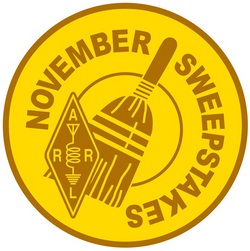 SS takes place on separate November weekends. The CW weekend is November 4-6, and the phone (SSB) weekend is November 18-20. The contest period for each contest begins at 2100 UTC on Saturday and continues through 0259 UTC on Monday (remember that the shift back to standard time occurs during the CW weekend). Stations may operate 24 hours of the available 30 hours. In a change this year, logs are due 5 days after each event. SS is a "domestic" contest with broad appeal, and even stations with modest equipment and antennas can enjoy success. Many stations like to operate in the QRP category (output of 5 W or less).
SS takes place on separate November weekends. The CW weekend is November 4-6, and the phone (SSB) weekend is November 18-20. The contest period for each contest begins at 2100 UTC on Saturday and continues through 0259 UTC on Monday (remember that the shift back to standard time occurs during the CW weekend). Stations may operate 24 hours of the available 30 hours. In a change this year, logs are due 5 days after each event. SS is a "domestic" contest with broad appeal, and even stations with modest equipment and antennas can enjoy success. Many stations like to operate in the QRP category (output of 5 W or less).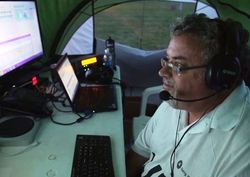
 During the exercise, a designated DOD Headquarters entity will request county-by-county status reports for the 3,143 US counties and county equivalents, in order to gain situational awareness and to determine the extent of impact of the scenario. Army and Air Force MARS organizations will work in conjunction with the Amateur Radio community, primarily on the 60-meter interoperability channels as well as on HF NVIS frequencies and local VHF and UHF, non-internet linked Amateur Radio repeaters.
During the exercise, a designated DOD Headquarters entity will request county-by-county status reports for the 3,143 US counties and county equivalents, in order to gain situational awareness and to determine the extent of impact of the scenario. Army and Air Force MARS organizations will work in conjunction with the Amateur Radio community, primarily on the 60-meter interoperability channels as well as on HF NVIS frequencies and local VHF and UHF, non-internet linked Amateur Radio repeaters. Every 2 weeks, your host, QST Editor-in-Chief Steve Ford, WB8IMY, and the Doctor himself, Joel Hallas, W1ZR, will discuss a broad range of technical topics. You can also e-mail your questions to
Every 2 weeks, your host, QST Editor-in-Chief Steve Ford, WB8IMY, and the Doctor himself, Joel Hallas, W1ZR, will discuss a broad range of technical topics. You can also e-mail your questions to .jpg) Applicants must be US citizens or permanent residents, reside in the ARRL New England Division (Maine, New Hampshire, Vermont, Rhode Island, Connecticut, Massachusetts), and have held an Amateur Radio license for at least 1 year prior to the date of application. Preference will be given in descending order of license class as well as to applicants pursuing full-time studies at a 4-year undergraduate degree-granting institution, pursuing post-graduate studies (any degree), or enrolled in radio communications at a 2-year technical school.
Applicants must be US citizens or permanent residents, reside in the ARRL New England Division (Maine, New Hampshire, Vermont, Rhode Island, Connecticut, Massachusetts), and have held an Amateur Radio license for at least 1 year prior to the date of application. Preference will be given in descending order of license class as well as to applicants pursuing full-time studies at a 4-year undergraduate degree-granting institution, pursuing post-graduate studies (any degree), or enrolled in radio communications at a 2-year technical school.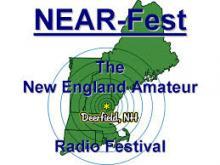 The ARRL Foundation is currently accepting applications from eligible radio amateurs pursuing higher education. More than 80
The ARRL Foundation is currently accepting applications from eligible radio amateurs pursuing higher education. More than 80 .jpg)
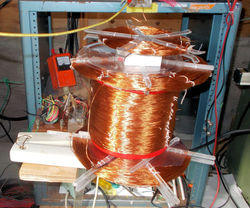
.jpg)
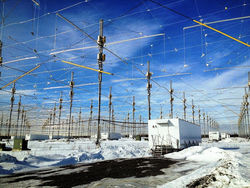 "The SSTV images, aside from being a fun way to engage hams in some of the ionosphere-heating science performed at HAARP, will be useful for understanding radio propagation from Arctic or high-latitude sources," Fallen told ARRL.
"The SSTV images, aside from being a fun way to engage hams in some of the ionosphere-heating science performed at HAARP, will be useful for understanding radio propagation from Arctic or high-latitude sources," Fallen told ARRL..jpeg) "I used Scottie-1 encoding for the images, because it is widely used in North America and the ~120-second duration fit nicely into the airglow experiment," Fallen said. "The antenna was directed toward the HAARP magnetic zenith, which, at ~75° elevation, is nearly vertical but has often been found by previous scientists to maximize artificial airglow."
"I used Scottie-1 encoding for the images, because it is widely used in North America and the ~120-second duration fit nicely into the airglow experiment," Fallen said. "The antenna was directed toward the HAARP magnetic zenith, which, at ~75° elevation, is nearly vertical but has often been found by previous scientists to maximize artificial airglow."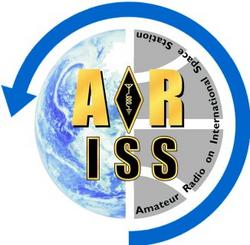 Each year, ARISS provides tens of thousands of students with opportunities to learn about space technologies and space communication via Amateur Radio. The program provides learning opportunities by connecting students to astronauts aboard the ISS through a partnership that includes NASA, ARRL, AMSAT, and worldwide space agencies. The program's goal is to inspire students worldwide to pursue interests and careers in science, technology, engineering, and mathematics (STEM) through Amateur Radio.
Each year, ARISS provides tens of thousands of students with opportunities to learn about space technologies and space communication via Amateur Radio. The program provides learning opportunities by connecting students to astronauts aboard the ISS through a partnership that includes NASA, ARRL, AMSAT, and worldwide space agencies. The program's goal is to inspire students worldwide to pursue interests and careers in science, technology, engineering, and mathematics (STEM) through Amateur Radio.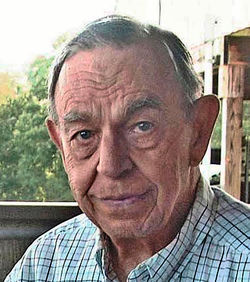 Licensed in Kansas City in 1954 as WN0YFT (later W0YFT), Smith served in the US Air Force from 1958 until 1966. He became W4NQA after moving to North Carolina. From 1968 until 1970, he was on the ARRL Headquarters staff and held the call sign W1ETU. When he moved to Virginia in 1970, he regained W4NQA and, after moving back to North Carolina, obtained N4AA in 1976.
Licensed in Kansas City in 1954 as WN0YFT (later W0YFT), Smith served in the US Air Force from 1958 until 1966. He became W4NQA after moving to North Carolina. From 1968 until 1970, he was on the ARRL Headquarters staff and held the call sign W1ETU. When he moved to Virginia in 1970, he regained W4NQA and, after moving back to North Carolina, obtained N4AA in 1976.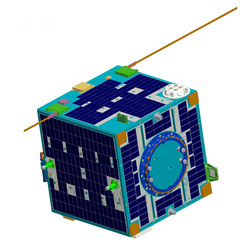 Chinese CAS-4A and CAS-4B Amateur Radio Satellite Transponders Activated: The Amateur Radio linear (SSB/CW) inverting transponders on the CAS-4A and CAS-4B satellites
Chinese CAS-4A and CAS-4B Amateur Radio Satellite Transponders Activated: The Amateur Radio linear (SSB/CW) inverting transponders on the CAS-4A and CAS-4B satellites  November 2017 Frequency Measuring Test Set: Frequency Measuring Test (
November 2017 Frequency Measuring Test Set: Frequency Measuring Test (-Orr,-W8NPU.jpg) QCWA Honors William Orr, W8NPU, with its 80th Anniversary Award: The Quarter Century Wireless Association (
QCWA Honors William Orr, W8NPU, with its 80th Anniversary Award: The Quarter Century Wireless Association (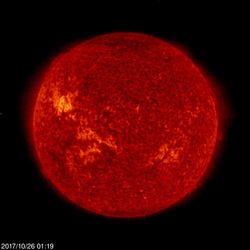 The predicted solar flux for the near term is 79 and 78 on October 26-27; 77 on October 28-29; 76 on October 30-November 1; 77 on November 2; 85, 84, and 82 on November 3-5; 80 on November 6-17; 82 on November 18-19; 84 on November 20; 85 on November 21-30; 84 and 82 on December 1-2, and 80 on December 3-9.
The predicted solar flux for the near term is 79 and 78 on October 26-27; 77 on October 28-29; 76 on October 30-November 1; 77 on November 2; 85, 84, and 82 on November 3-5; 80 on November 6-17; 82 on November 18-19; 84 on November 20; 85 on November 21-30; 84 and 82 on December 1-2, and 80 on December 3-9.







